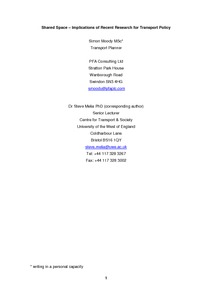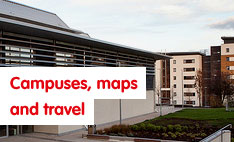Moody, S. and Melia, S.
(2011)
Shared space: Implications of recent research for transport policy.
Working Paper.
University of the West of England, Bristol.
[Submitted]
![[img]](Shared20Space202D20Implications20of20Recent20Research20for20Transport20Policy.pdf)  Preview |
|
PDF
- Submitted Version
794Kb |
Publisher's URL: http://eprints.uwe.ac.uk/17937/
Abstract
Shared space is an approach to street design which minimises demarcations between vehicles and pedestrians. It has become particularly influential in the UK, where a comprehensive study of shared space schemes has informed recently published national guidance to local highway authorities. This article critically examines the claim made in the guidance that it is ‘evidence based’. Primary research reported in the article, examines one of the sites in the ‘official study’, in Ashford, Kent, in greater depth, using video observation and a street survey of pedestrians. The findings show that most pedestrians diverted away from their desire lines, gave way to vehicles in most cases and felt safer under the original road layout. This study casts doubt on some aspects of the methodology and findings of the ‘official study’ and its interpretation in the national guidance. The authors conclude that some claims made for shared space have been exaggerated. Shared space is not, in itself, a sustainable transport measure. It may be combined with, and form part of a sustainable transport strategy. It has also been proposed as an alternative to measures such as pedestrianisation, in which case its effects on modal share and the externalities generated by road traffic would be deleterious.
Available Versions of this Item
-
Shared space: Implications of recent research for transport policy. (deposited 21 Nov 2011 15:31)
[Currently Displayed]
Repository Staff Only: item control page
Total Document Downloads in Past 12 Months













